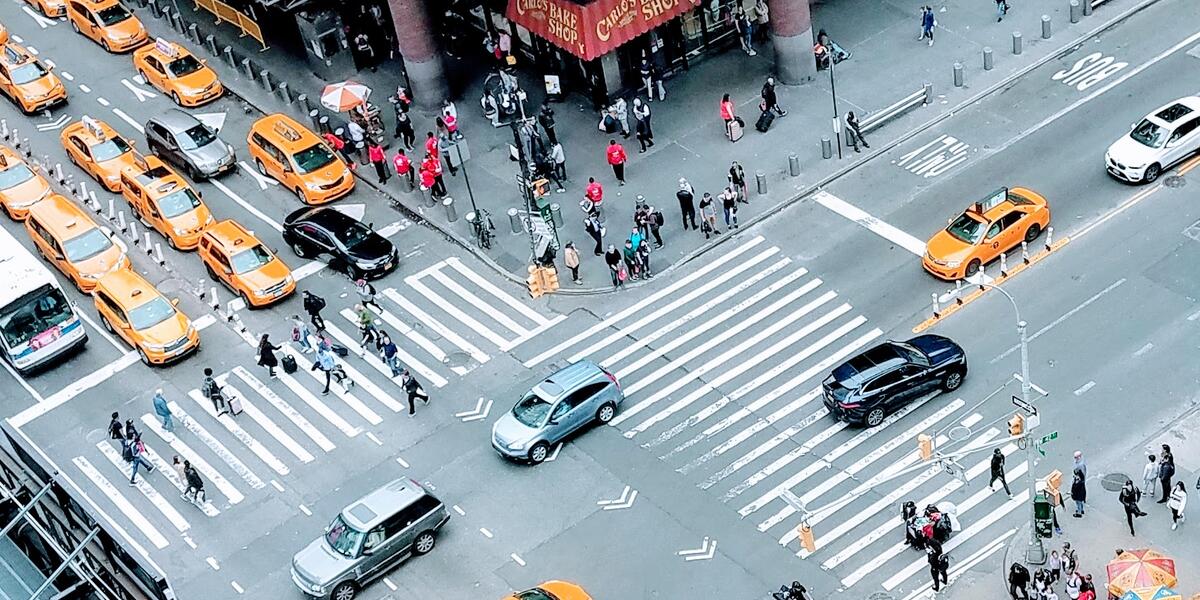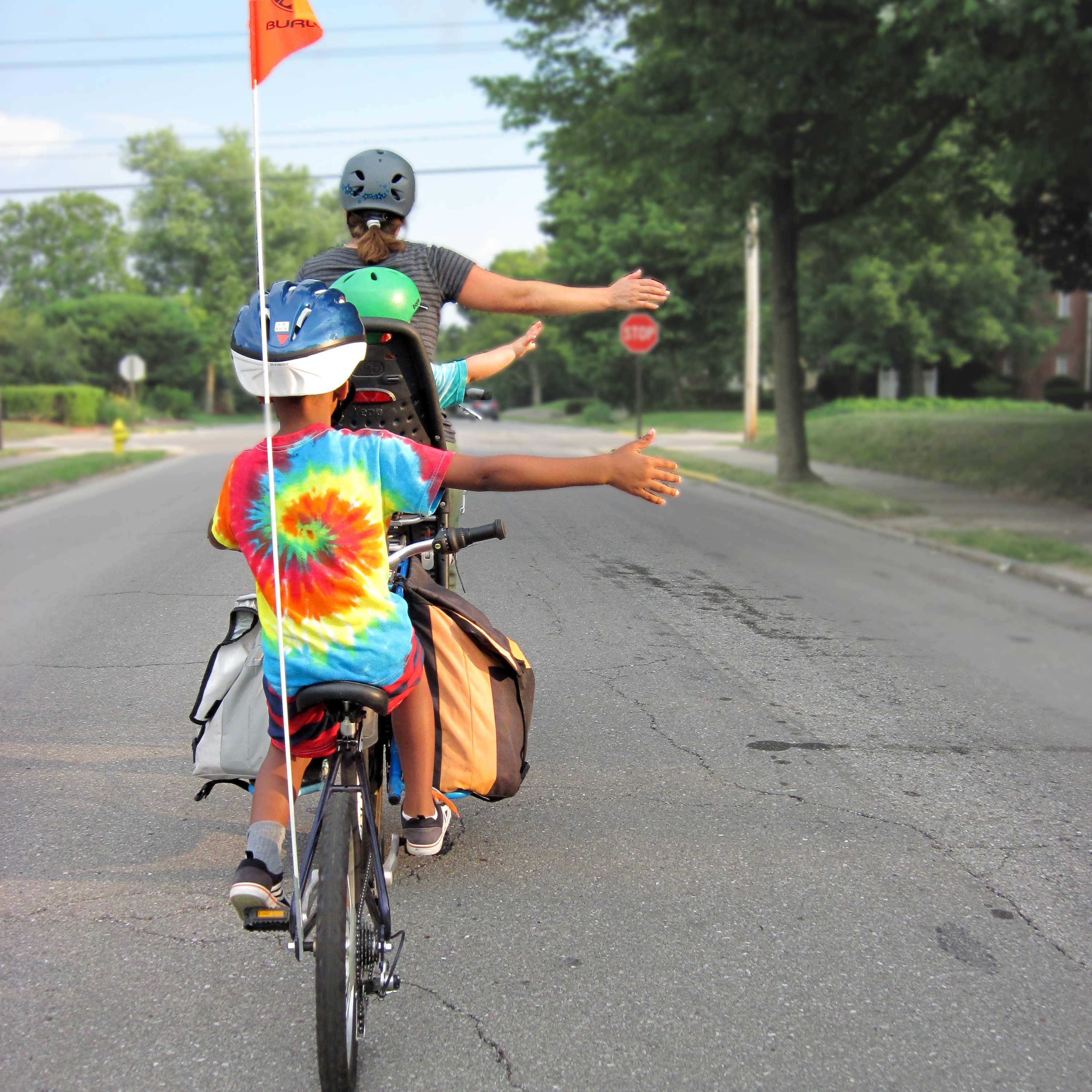By appropriately using communication, you make it easier for other drivers to see you. You also make it easier for you to see other drivers. Ensuring that you can see other drivers and that they can see you will drastically reduce the chance of an accident. The following communication devices are part of your “execution arsenal”:
- Turn signals can be used to let other drivers know that you are turning, changing lanes, pulling out of a parking space, or pulling out from the curb. You should signal at least four seconds before you plan to take action.
- Emergency Signals should be used to warn other drivers that you are experiencing vehicle trouble or when you must park on the shoulder of the roadway for an emergency. This is a warning to other drivers to give you more space.
- The horn should be tapped lightly when trying to gain the attention of another driver or pedestrian. It should not be used to vent frustration at other drivers’ actions.
- Headlights: Many new trucks have daytime running lights that turn on automatically. These help other drivers see you. You can flash your lights to oncoming traffic to warn them of dangers up ahead, such as accidents or obstructions in the roadway.
Turn Signals
Use turn signals to indicate your intent to change lanes, visually scan for adjacent traffic and road hazards, and then execute a safe lane change. By signaling your intentions well in advance, you will be in a safer position to communicate with the surrounding drivers, and you will be able to execute the desired driving maneuver safely.
A good safety practice is to signal at least 4 seconds before turning.
Did You Know?
A recent study reported approximately 630,000 lane-change crashes annually (including large trucks and passenger vehicles).
While you certainly wouldn't know it from watching most drivers out there, using a turn signal to indicate a lane change is generally the law.
Emergency Signals (4 Ways)
FMCSA 392.22 Emergency signals; stopped commercial motor vehicles. Whenever a commercial motor vehicle is stopped upon the traveled portion of a highway or the shoulder of a highway for any cause other than necessary traffic stops, the driver of the stopped commercial motor vehicle shall immediately activate the vehicular hazard warning signal flashers and continue the flashing until the driver has placed the warning devices required by CFR 395.22. The flashing signals shall be used when the warning devices are picked up for storage before the movement of the commercial motor vehicle. The flashing lights may be used at other times while a commercial motor vehicle is stopped in addition to, but not in place of, the warning devices required by this section.
Horn
The horn on a commercial motor vehicle is a safety device that can be the sole item that can prevent an accident by sounding an alarm and communicating your presence to another vehicle. However, we all know of drivers that have abused the use of a horn and may cause an accident by startling another motorist. There have been instances of Road rage documented that all started with the misuse of a horn. The sound of a horn is one of the few actions a driver takes that can intrude into the driving compartment of another vehicle. Horns on commercial vehicles vary in size from small electric (city horns) to large exterior-mounted chrome trumpeted air horns. Novelty horns playing familiar tunes to college football fight songs are also popular.
So what does the Federal Motor Carrier Safety Administration say about a horn?
The Answer is found in CFR§393.81:
Every bus, truck, truck-tractor, and driven motor vehicle in driveaway-towaway operations shall be equipped with a horn and actuating elements in such condition as to give an adequate and reliable warning signal.
§393.81 DOT Interpretations:
Q: Do the FMCSRs specify what type of horn will be used on a CMV?
A: No.
Q: Are there established criteria in the FMCSRs to determine the minimum sound level of horns on CMVs?
A: No.
Q: Can I drive my commercial motor vehicle if the horn is not operational?
A: NO- CFR§392.7
Equipment, inspection, and use
No commercial motor vehicle shall be driven unless the driver is satisfied that the following parts and accessories are in good working order, nor shall any driver fail to use or make use of such parts and accessories when and as needed:
Service brakes, including trailer brake control, Parking (hand) brake., Steering mechanism, Lighting devices and reflectors, Tires, horns, Windshield wipers or wipers, Rear-vision mirrors or mirrors, and Coupling devices.
Headlights
Many companies now have their trucks programmed to have low-beam headlights on whenever the engine runs. Many states have laws that now require headlights to be on any time windshield wipers are in use. Both are good safety practices.
Are the headlights on your truck “fogged” or dirty? Do you ensure your headlights, turn signals, and brake lights are clean during pre and post-trip inspections?
Per the National Institute for Traffic and Highway Safety, the number one reason for severe nighttime accidents and reduced driving safety is dim or cloudy and improperly lit headlights. If a headlight has ineffective or diminished light output, your nighttime driving safety is greatly at risk. According to a study by the University of Iowa, a 20 to 50% reduction in headlight output leads to a 90% increase in the possibility of an accident. This is a very unnecessary risk as it is easy to either clean, replace or fix these headlights.
Dim it!
Q: Is flashing high beams at cars illegal? Someone told me that flashing your headlights at a vehicle in front of you, particularly if it is going slow in the fast lane, is a citable offense. Is this true?
A: Yes, in some states, that is true.
The main concern of flashing an oncoming motorist is that they may be temporarily blinded and may create blind spots for other motorists while operating their vehicles, thus creating and hazardous situation.
National Work Zone Awareness Week April 17-21st
National Work Zone Awareness Week (NWZAW) is an annual spring campaign to encourage safe driving through highway work zones and construction sites at the start of construction season. The key message is for drivers to use extra caution in work zones. For more information, check out the link below:
The Commercial Vehicle Safety Alliance has announced this year’s International Roadcheck dates as May 16-18
Roadcheck is a 72-hour high-visibility, high-volume commercial motor vehicle inspection and enforcement initiative. Commercial motor vehicle inspectors in Canada, Mexico, and the U.S. will conduct North American Standard Inspections of commercial motor vehicles and drivers at weigh and inspection stations, roving patrols, and temporary inspection sites.
Each year, CVSA focuses on a specific aspect of a roadside inspection. This year the focus will be on anti-lock braking systems (ABS) and cargo securement. ABS violations are not out-of-service violations; however, the anti-lock braking system is critical in reducing collisions. A properly functioning ABS will prevent wheels from locking up or skidding, allowing a driver to maintain vehicle control while braking. Improper or inadequate cargo securement accounted for 10.6% of all vehicle out-of-service violations discovered during last year’s International Roadcheck. Past International Roadcheck data routinely found cargo securement violations in the top five of vehicle out-of-service violations.









